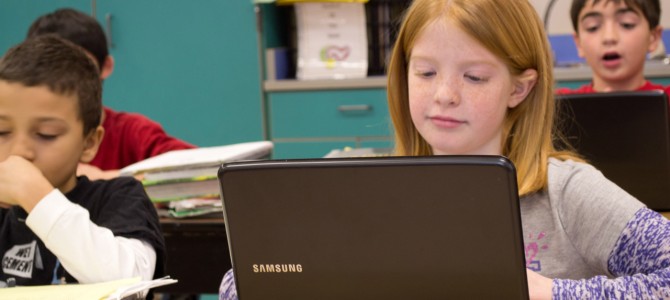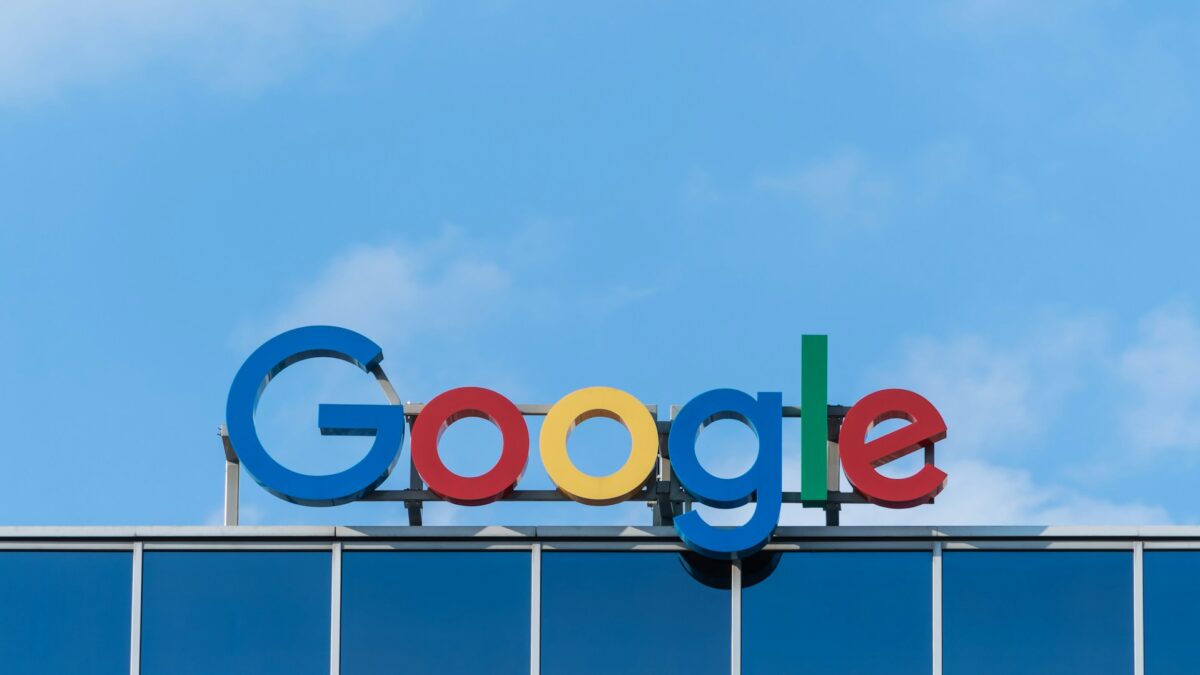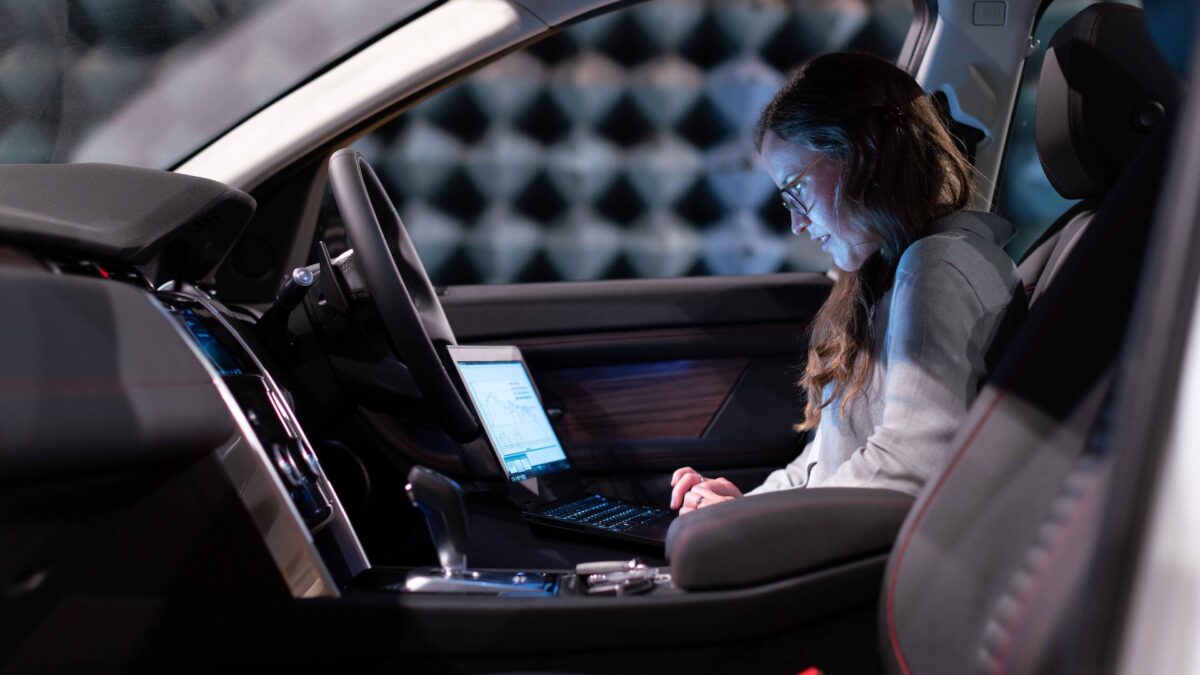
The American Academy of Pediatrics recently revised its screen time recommendations for young children for the second time in the last year. This time AAP says it’s fine for babies and toddlers to video chat occasionally and that its recommended limits to screen time for each age group only apply to entertainment media, not “educational” media.
For a long time, AAP had recommended that children younger than two not watch screens at all. Parental “best practices” were to not give your baby your cell phone or iPad or park him in front of a TV during breakfast. Parents have known this since the era of mass TV. Lots of us have just been ignoring it.
Faced with parents’ widespread decision to make life easier for themselves rather than better for their kids, last year, AAP announced it was reconsidering its reinforcement of the social norm against screensitters. It waved the banner of science, yes, but also indicated the changes were pragmatic: “In a world where ‘screen time’ is becoming simply ‘time,’ our policies must evolve or become obsolete,” the AAP’s media committee wrote in announcing the policy revamp last year.
Yes, Screens Are a Social Problem
Many parents don’t seem to want to digest that allowing their kids to saturate themselves with media can be as harmful as allowing kids to pick what they eat. Surveys typically find high, and often growing, screen use among young children despite a growing number of well-documented cultural and medical concerns about addictions, twitches, overuse, attention disorders, greater acceptance of what used to be called rudeness (just dropping out of conversations to check a phone, for example, or ignoring one’s parents completely), and so forth.
One survey of 2,000 British children found five- to ten-year-olds watched approximately 2.5 hours of TV per day in 1995. In 2014, the same age range of kids averaged 4.5 hours of screen time per day. A 2013 U.S.-based study found the average toddler (ages 2 to 4) gazes at screens for two hours per day, on average. Kids ages five to eight average two hours, twenty minutes with screens per day.
It’s not that children are consuming TV and Internet entertainment as a well-earned reward after a day of robust intellectual and physical engagement. Three-quarters of kids ages 5 to 10 spend less than an hour a day physically active (a statistic you’ll find shocking if you have any boys in your home); the same proportion of parents say they “choose to spend family time with their children sitting in front of a TV set.”
Compared to kids in 1975, global health data from 28 developed countries finds that “Children today take 90 seconds longer to run a mile” and “Children’s aerobic fitness has declined by 5 percent.” Researchers in that study used speed to approximate heart health, a major factor in one’s lifelong health quality. Physical activity is, especially so for children but also for humans in general, an accelerator and facilitator for intellectual and social development. It creates a better physiological environment for learning and relationships.
The number of 13-year-olds who say they “never” or “hardly ever” read for pleasure has nearly tripled since 1984, even though the book industry’s efforts to cater to tween desires has in that time drastically expanded. Half of teens say they feel addicted to their devices. Two-thirds of fourth-graders today score less than “proficient” in reading on respected national tests—a measure that predicts lifelong literacy and even other effects such as marital satisfaction and career success.
So parents who allow their children to substitute electronic bleeping and blooping for even just verbal and physical approximations of the same are—mildly but truly—setting their kids back in life. Electronic stimulation may tickle more pleasure receptors more quickly and therefore trick us into thinking we’re getting a lot out of this artificial interaction, but it burns them out faster and generally deprives people of more sustained and genuine activities that will promote better pleasure and personal development long-term.
I’m not saying never, ever hand your child a screen or never play video games together. I’m saying screens are better as the anomaly in one’s family life, not the default. In many if not most folks’ homes, it’s the reverse. And our lives and world are poorer because of it.
‘Educational Apps’ and Tech Initiatives Are No Better
This all presents a public health conundrum: In its revised recommendation, would AAP tell parents the unpleasant truth, or give them modified guidelines they will find more realistic and thus doable? Despite its very good set of considerations and recommendations overall it appears AAP has chosen the latter, at least if one mostly glances at headlines (which our Internet-fueled skimming habits make all the more likely). Worse, the AAP gives parents permission to feed their kiddos unlimited screen time provided it’s spent on “educational” apps. This is the ultimate parental “get out of jail free” card.
One wonders if the fact that AAP’s recommendations name-checked specific representatives of the educational media industry—PBS, Common Sense Media—implies anything about their independence in this matter. It’s certainly eyebrow-raising that these same organizations have received money from the Bill and Melinda Gates Foundation, because the world’s largest philanthropy has made amassing lifelong data dossiers on children a prime private and public policy goal. (To fry your eyebrows, check out what China is doing with its new lifelong citizen dossiers.) Recommending “educational” screen time has the effect of directing voluminous Internet traffic through the exact category of apps the Gates Foundation is extremely active in funding and amassing global databases from. Maybe it’s just a coincidence.
One of the hottest things in education lately is tagging taxpayers for big bills for shiny new tech that supposedly will—but of course!—help kids learn more. Half of all schools now have one computer for every child. Seeing increases in student achievement so far? Try the opposite. Further, a good deal of the emerging research suggests iPads and Chromebooks and smartboards do more distracting from learning than facilitating it.
We’re sold federal subsidies for local schools’ Internet with pitiful comments about how poor kids can’t get online to do their homework even though the typical poor household with children in America not only has a personal computer and Internet access but an average of three televisions plus cable, a gaming system, and a cordless phone (and that’s from 2005 data! By now the saturation has only increased markedly).
What no one ever asks is why, exactly, do children need more computer time at school? We’re sold a lot of hype about technology that ignores decades if not centuries of promises about how each new invention will “revolutionize education.” As AEI’s Rick Hess notes, Thomas Edison sold people the same old bill of goods in 1922 by claiming “The motion picture is destined to revolutionize our educational system. . . . In a few years it will supplant largely, if not entirely, the use of textbooks.”
But the only thing that will revolutionize education is what has always revolutionized anything. This one Edison gets right: “Genius is 1 percent inspiration, 99 percent perspiration.” Achievement requires effort. That’s the antithesis of vegging on the couch, for you screen-trained readers who skimmed Edison’s quotes like I often do.
Delay Tech Access as Long as Possible
Given that elementary-age kids are spending two-and-a-half hours per day on screens and teens, who are much closer to the job market, spend a whopping nine hours a day hooked up, it sounds much more sensible to say schools should give those poor jittering creatures a detox instead of another hit. Schools staffed by grown-ups aren’t going to teach kids anything about technology they don’t already know better. So they should stick to the stuff kids aren’t going to find inside their own desires, the enduring ideas adults have and should always pass down to the next generation that will die out if they don’t.
For further reinforcement of this idea, look no further than Silicon Valley, where tech industry leaders openly refuse to feed their families the mental junk food they’re cooking the rest of us for fun and profit. Steve Jobs famously raised his kids low-tech. As early as 2011 The New York Times reported on this trend with a profile of a tech-free Waldorf school populated by kids of Google, Apple, Yahoo, and eBay execs.
“I fundamendally reject the notion you need technology aids in grammar school,” Alan Eagle of Google told the Times. “The idea that an app on an iPad can better teach my kids to read or do arithmetic, that’s ridiculous.” He and the school’s teachers emphasized that education is a human endeavor built on personal relationships.
Besides, as a number of these highly paid coders have pointed out, coding — which is the real STEM skill you want, not easy timewasters like PowerPoint familiarity — can be taught relatively quickly and becomes outdated quickly, making it a better fit for right before a kid jumps into a job, not for elementary school. Seriously, there’s nothing to lose by delaying and limiting screen time for a young child, and a lot to gain.
Well, I guess you lose something: Some temporary and perhaps counterproductive personal comfort for the kids’ caretakers, who now have to teach the kids how to occupy themselves constructively, even in leisure time. All I’m asking is that we actually think about this tradeoff, especially on behalf of kids who aren’t mature enough to evaluate it well for themselves. Kids deserve that much from their adults.
While Los Angeles public schools, which are full of low-income kids, throw billions almost literally out the window in their massive failure of a plan to give every student an iPad, the wealthy families in the same region are reducing tech access for their kids. Why should rich kids be the only ones given the power of concentration and attention by delayed and limited tech access when young? More, not fewer, parents and schools should take the approach recently outlined by this Silicon Valley family headed by a pair of technology entrepreneurs. In short, they cut tech at home drastically and started spending more time outside and together.
The results were improved family relationships and the likelihood the kids would end up in a better professional situation than their parents are now—in other words, achieving the American Dream:
Becoming a low-tech family resulted in cultivating the best aspects of Silicon Valley startups where high energy ingenuity, creativity, and passion thrive. The core of Silicon Valley is not just about technology, it’s about the innovation process. Our newly adopted lifestyle has created both the physical and mental space for our children to deeply engage with the creative spirit that resides in all of us.
Kids with attentive parents shouldn’t be the only ones blessed with tech training wheels. Schools already fill in the gaps for poor parenting in myriad ways. By drastically curtailing tech use (why not an outright ban until middle school?), they can manage to do it in yet another—all while saving taxpayers a ton of money. Besides, those kids are going to need both the savings and the heightened professional abilities that come from better concentration powers if they’re ever going to pay off all the public debt Boomers have already bequeathed them.









